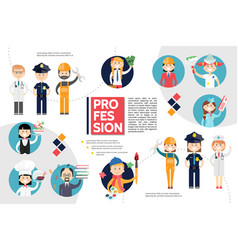Figure Out How Seasonal Elements Affect Commercial External Painting Success And Uncover The Most Effective Times To Make Certain Enduring Results For Your Project
Figure Out How Seasonal Elements Affect Commercial External Painting Success And Uncover The Most Effective Times To Make Certain Enduring Results For Your Project
Blog Article
Web Content Writer-Burnham Rodriquez
When you're preparing a business external painting project, seasonal elements can make or break your results. You'll want to think about how temperature level and humidity influence paint application and drying out times. Choosing the right season can ensure your paint adheres effectively and lasts much longer. Yet which periods are genuinely the best for this sort of job? Let's check out the crucial elements that can impact your task's success.
The Impact of Temperature on Paint Application
When you're preparing an industrial outside painting project, the temperature level can dramatically influence exactly how well the paint adheres and dries.
Preferably, you want to paint when temperature levels vary in between 50 ° F and 85 ° F. If it's too cold, the paint may not cure correctly, resulting in problems like peeling or breaking.
On the other hand, if it's too hot, the paint can dry as well quickly, avoiding proper adhesion and resulting in an unequal surface.
You need to likewise think about the moment of day; early morning or late afternoon supplies cooler temperature levels, which can be much more favorable.
Constantly examine the producer's recommendations for the details paint you're making use of, as they frequently give support on the perfect temperature level variety for ideal results.
Humidity and Its Impact on Drying Times
Temperature isn't the only environmental factor that affects your commercial exterior painting project; humidity plays a significant role as well. High moisture degrees can decrease drying times dramatically, influencing the overall top quality of your paint work.
When the air is filled with wetness, the paint takes longer to treat, which can bring about problems like poor adhesion and a higher risk of mold development. If you're painting on an especially moist day, be planned for prolonged wait times between layers.
It's vital to keep track of neighborhood weather and strategy appropriately. Preferably, go for click here for info in between 40% and 70% for optimum drying.
Maintaining these factors in mind ensures your job remains on track and delivers a long-term surface.
Best Seasons for Commercial Exterior Painting Projects
What's the best time of year for your industrial external paint tasks?
Springtime and early loss are usually your best options. During these seasons, temperature levels are mild, and moisture levels are usually lower, producing ideal conditions for paint application and drying out.
Prevent summertime's intense heat, which can cause paint to completely dry as well swiftly, causing bad adhesion and surface. Likewise, winter's cool temperatures can hinder appropriate drying and healing, taking the chance of the durability of your paint work.
Go for days with temperature levels between 50 ° F and 85 ° F for optimum results. residential painting texas in mind to examine the neighborhood weather report for rain, as damp problems can wreck your task.
Planning around these aspects guarantees your painting project runs efficiently and lasts longer.
Final thought
To conclude, planning your industrial external painting tasks around seasonal considerations can make a significant distinction in the outcome. By scheduling job throughout the optimal temperatures and moisture levels, you'll make sure far better attachment and drying times. Bear in mind to keep an eye on neighborhood weather forecasts and select the correct time of year-- spring and very early fall are your best bets. Taking these actions will certainly assist you accomplish a resilient and expert coating that lasts.
